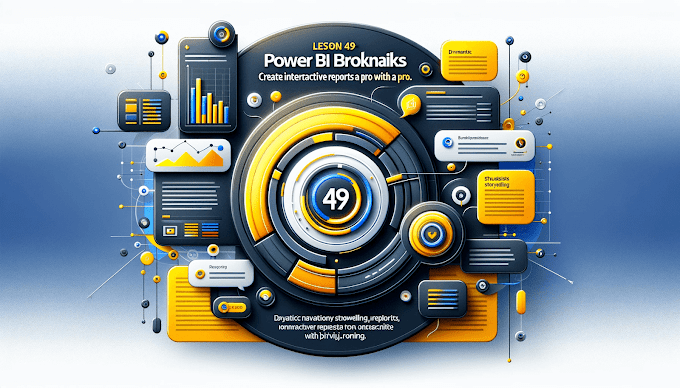Welcome back to Virvijay.com, where we simplify Power BI for you! 🎯
Do your reports take too long to load when dealing with millions of rows? 😩
The solution: Power BI Aggregations! 🚀
In this blog, you’ll learn:
- ✅ What Power BI Aggregations are.
- ✅ How they improve report performance.
- ✅ Step-by-step guide to set up Aggregations.
- ✅ Best practices for handling large datasets efficiently.
1️⃣ What Are Power BI Aggregations?
- Aggregations pre-calculate summary data at a higher level, reducing the amount of data Power BI needs to process.
- Instead of querying millions of rows, Power BI uses a smaller aggregated table, making reports super fast!
🚀 Example:
You have 100 million sales records.
Instead of querying every transaction, you create an Aggregated Table with only:
- Total Sales by Year & Category.
Power BI first checks this small table for results.
If more details are needed, Power BI queries the large table only when required.
💡 Why Use Aggregations?
- ✅ 10x Faster report performance.
- ✅ Reduces CPU & Memory usage.
- ✅ Works well with Direct Query & Import Mode.
2️⃣ Types of Aggregations in Power BI
Power BI uses these pre-aggregated values instead of recalculating millions of rows every time.
3️⃣ Setting Up Aggregations in Power BI (Step-by-Step)
Step 1: Load Your Data
- Open Power BI Desktop.
- Click Get Data → SQL Server (or any source).
- Load the detailed transaction table (e.g., Sales Data).
Step 2: Create an Aggregated Table
- Go to Power Query Editor.
- Click New Table and enter this formula:
DAX
Aggregated_Sales =
SUMMARIZE( 'Sales Data',
'Sales Data'[Year],
'Sales Data'[Category],
"Total Sales", SUM( 'Sales Data'[Sales Amount] )
)
📌 This table pre-aggregates total sales by Year & Category.
Step 3: Set Up the Aggregation Relationship
- Go to Model View.
- Click on Aggregated Table → Select Manage Aggregations.
- Map columns like this:
Now, Power BI will first check this small table before querying the full dataset!
Step 4: Set the Storage Mode to "Dual"
- Go to Model View → Select Aggregated Table.
- Change Storage Mode to Dual.
- Click Apply.
💡 Why?
- Dual Mode" lets Power BI use Import Mode (Fast) when possible.
- Uses DirectQuery (Slow) only when detailed data is required.
4️⃣ Testing Aggregations in Power BI
🔹 Scenario 1: You create a report showing Total Sales by Year.
- Power BI fetches data instantly from the Aggregated Table (Fast ✅).
🔹 Scenario 2: You add Product Name to the report.
- Power BI queries the detailed table only for extra details (Slower ❌).
💡 The key is to keep most reports at the aggregated level for best performance!
5️⃣ Best Practices for Power BI Aggregations
- Use Aggregations for Large Datasets – If your dataset has millions of rows, use Aggregations.
- Keep Aggregated Tables Small – Store only necessary columns to reduce data size.
- Combine with Incremental Refresh – Speed up refresh times by updating only recent data.
- Use Dual Mode Storage – Allows both Import & DirectQuery for flexible performance.
- Monitor Aggregation Hit Rate – Use Performance Analyzer to check how often Power BI uses Aggregations.
6️⃣ Conclusion: Why Aggregations Make Power BI Faster!
By using Aggregations, you can:
- Improve Power BI report speed by 10x.
- Reduce query load on your data source.
- Optimize large datasets for faster insights.
- Balance performance & flexibility in reports.
🚀 Now, your Power BI dashboards will be lightning-fast! 🎯
7️⃣ What’s Next?
📌 In the next blog, you’ll learn:
- How to use Power BI Performance Analyzer.
- Best practices for report optimization & DAX improvements.
- Common mistakes that slow down Power BI reports.
🔔 Stay tuned to Virvijay.com for more Power BI tutorials!
💬 Got questions? Drop at support@virvijay.com















%20Best%20Practices%20%E2%80%93%202025%20Guide'%20illustrating%20secure%20and%20controlled%20data%20acce.jpg)
%20Best%20Practices%20%E2%80%93%20Secure%20Your%20Reports%20Like%20a%20Pro'%20with%20virvijay.com.%20The%20des.jpg)

